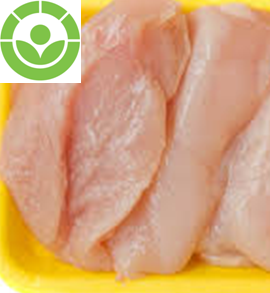An article published in the Journal of Food Protection (TARBOUSH et al. 2022, J Food Prot (1997) 60 (7): 761–770) described the effect of gamma irradiation doses of 2.5, 5.0,7.5, and 10.0, kGy on raw chicken (breast and thigh) stored at 4.0°C. Samples were drawn at day 0 and 3-day intervals up to 21 days for sensory and microbiological analyses. All irradiation doses had little effect on the sensory acceptability (appearance, odor, texture, taste) of both raw and cooked chicken (breast and thigh). The juiciness and tenderness of cooked chicken were only slightly affected by irradiation, and chickens were not rejected even after 21 days of storage. A dose of 2.5 kGy seemed adequate to extend the shelf life of chicken by 12 days, and increasing the dose level above 2.5 kGy gave little, if any, benefit. A dose of 2.5 kGy was enough to destroy Salmonella, Yersinia, and Campylobacter species and coliforms. Irradiated chickens, with their increased shelf life, would mean less waste, considerable savings in the poultry trade, and safer products in terms of pathogenic microorganisms such as Salmonella, Yersinia, and Campylobacter species. @ https://meridian.allenpress.com/jfp/article/60/7/761/195943/Sensory-and-Microbial-Quality-of-Chicken-as
Irradiation with 2.5 kGy of chicken extended shelf life in storage at 4.0°C by 12 days
Chickens were subjected to gamma irradiation doses of 2.5, 5.0,7.5, and 10.0 kGy using a semi-commercial gamma irradiation facility. The irradiated and unirradiated (control) chickens were stored at 4.0°C, and samples were drawn at day 0 and at 3-day intervals up to 21 days for sensory and microbiological analyses. All irradiation doses (2.5 to 10.0 kGy) had little effect on the sensory acceptability (appearance, odor, texture, taste) of both raw and cooked chicken (breast and thigh). Irradiation extended the time during which these characteristics were acceptable. Moreover, juiciness and tenderness of cooked chicken were only slightly affected by irradiation, and chickens were not rejected even after 21 days of storage. A dose of 2.5 kGy seemed adequate to extend the shelf life of chicken by 12 days, and increasing the dose level above 2.5 kGy gave little if any additional benefit as far as total and psychrotrophic bacterial counts are concerned. Moreover, the dose of 2.5 kGy was enough to destroy Salmonella, Yersinia, and Campylobacter species and coliforms. The study also showed that yeasts of the genera Candida, Saccharomyces, and Alternaria started to grow on day 12 in samples treated with ≥5.0 kGy, but not in samples treated with <5.0 kGy.


